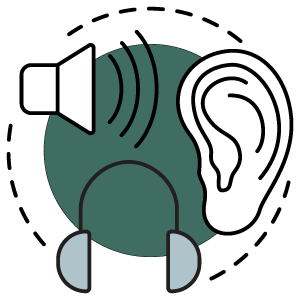Civic Lab Online: What is Critical Race Theory?
Posted on August 3, 2021 at 6:00 am

About Civic Lab Online
Civic Lab Online provides information on issues facing our community for you to explore. Take a look at thought-provoking materials for teens and adults that allow us to engage in open conversation and grow together as a community. You’ll find all past topics on the Civic Lab Online web page.
Fast Facts
Critical race theory has generated a lot of buzz recently. Schools are trying to puzzle out what it is. Legislation to keep it out of public schools is making headlines. Disagreements have erupted across party lines about how to right past wrongs. So, what is critical race theory and why is it so controversial?
What is critical race theory?
Critical race theory (CRT) is covered in some graduate and law schools and has five major tenets:
The first is counter-storytelling, which is the idea that sharing the lived experiences of people of color is necessary, especially if those stories are not being told via mainstream sources.
The second is that racism is part of everyday life and an embedded part of our society, also called the permanence of racism. According to CRT, racism is present in legal institutions, law, and sometimes other societal structures (systemic racism), with the intent to give more or less privilege to certain races. Consequently, well-meaning people living with those laws and institutions participate in racism. To have a less racist society, critical race theory concludes that we need to change institutions rather than focusing on changing the prejudice of individuals.
The third tenet is whiteness as property. This is the idea that your racial identity was tied to privilege early on in America’s history and now parts of culture associated with being white are deliberately protected by laws and institutions that have arisen from that history.
The fourth tenet is interest convergence, developed by Professor Derrick Bell, and it stipulates that black citizens achieve civil rights victories only when white and black interests are the same.
The fifth is critique of liberalism. “Liberalism” can mean different things, but in this case scholars of CRT are against schools of thought that don’t acknowledge racial differences, such as “color blind” policies, for example, because CRT sees color as something to be celebrated. Liberalism is also criticized by CRT for the ideas that racism is only deliberate aggression and is contrary to the norm. Both ideas are rejected by CRT. Other aspects of liberalism are also sometimes critiqued, such as that America was founded on the principals of “equal opportunity for all” or will improve through “incremental change.”
Additionally, CRT is rooted in the idea that race is a social construct rather than a biological one. For example, there is no one feature that determines someone’s race (skin color, eye shape, hair texture), and what society acknowledges as a race rather than a nationality or ethnicity has changed over time. Critical race theorists argue that race is a concept society has created.
Popular criticisms of CRT include that it focuses too much on experiences over empirical data, that it focuses on group identity over universal human traits, and that it divides people into groups of oppressors and oppressed.
Kimberlé Crenshaw, who coined the term “critical race theory,” maintains that critical race theory will continue to evolve over time as society changes: “It cannot be confined to a static and narrow definition but is considered to be an evolving and malleable practice.” Conversations about critical race theory can quickly become convoluted because of discrepancies over what people believe about CRT: what it encompasses, what organizations it supports, and what policies CRT has informed.
What legislation has been introduced around critical race theory, and why is it controversial?
Twenty-six states have introduced bills that would limit how teachers talk with students about racism or sexism, and nine states have passed legislation billed as against “critical race theory.”
There is no school curriculum in any state that has been written by scholars of critical race theory, and in most cases, critical race theory is not mentioned by teachers to students at all. However, because CRT is a way of looking at historical events and institutions, it has become a catch-all term for a host of issues. These include ways of teaching about gender equality, homophobia, racism, and white supremacy—whether these topics have anything to do with the tenets of the graduate school discipline of critical race theory or not. This has caused additional confusion as parents and teachers try to understand what legislation is addressing, whether what it is addressing is present in their school, and what their personal stance is on it.
Federal legislation includes Senator Ted Cruz’s endorsement of the “End CRT Act” (or “Stop CRT Act”), a bill that would cut federal funding for any school where teachers endorse any of the following:
- That one race or sex is inherently superior to another race or sex
- That the United States is fundamentally racist or sexist
- That an individual, by virtue of his or her race or sex, is inherently racist, sexist, or oppressive, whether consciously or unconsciously
- That an individual should be discriminated against or receive adverse treatment due to race or sex
- That members of one race or sex cannot and should not attempt to treat others without respect to race or sex
- That an individual, by virtue of his or her race or sex, bears responsibility for actions committed in the past by other members of the same race or sex
- That any individual should feel discomfort, guilt, anguish, or any other form of psychological distress on account of his or her race or sex
- That meritocracy or traits such as a hard work ethic are racist or sexist, or were created by a particular race to oppress another race
In June 2021, legislation was introduced in Congress that would cut federal funding to schools that teach history using the 1619 Project, a New York Times series on how slavery impacted American history. If passed into law, the Saving American History Act would require the U.S. Secretary of Education to identify the cost of these lessons and subtract it from the school’s federal aid.
In Idaho, Governor Brad Little signed a law in April limiting the ways that teachers can discuss race and gender and banning what the legislation called tenets of critical race theory. The tenets in the Idaho law are different than those typically included in CRT, though some concepts overlap. The law forbids schools to adhere to the ideas:
- That any sex, race, ethnicity, religion, color, or national origin is inherently superior or inferior
- That individuals should be adversely treated on the basis of their sex, race, ethnicity, religion, color, or national origin
- That individuals, by virtue of sex, race, ethnicity, religion, color, or national origin, are inherently responsible for actions committed in the past by other members of the same sex, race, ethnicity, religion, color, or national origin
- That no distinction or classification of students shall be made on account of race or color (except when collecting demographic data).
The proposed bills have been controversial in part because it isn’t always clear what the effects and limits of the bills would be in the classroom. If teachers are unsure what phrasing will get their school penalized during lessons on events like the Holocaust or civil rights movement, will they instead opt not to teach those subjects at all? Will teachers be able to mediate conflict in multicultural classrooms without making anyone feel “discomfort, guilt, or anguish”? Communication between teachers and parents may also be difficult when no one can agree on common terms to discuss school curriculum.
Read, Watch, Listen

READ
Meckler, Laura, and Hannah Natanson. “As schools expand racial equity work, conservatives see a new threat in critical race theory.” Washington Post, 3 May 2021. Gale in Context: Opposing Viewpoints. Accessed 1 July 2021.
A breakdown of individual controversies across the nation in K-12 education, over how history should be taught and how different cultural experiences and racial differences should be addressed. Are children being forced to address issues of race too early and too often? Are schools safe and welcoming places for all students, or are some children prioritized more in a school’s culture?
Bell, Derrick. Faces at the Bottom of the Well. Basic Books, ebook format. 2018.
One of the pioneering books that launched the idea of critical race theory, Bell’s work covers the permanence of racism and the need for people of all races in poverty to band together for change. A new forward by Michelle Alexander reflects on how the book is relevant today.

WATCH
WATCH: Answering your questions on critical race theory. Public Broadcasting Service, PBS News Hour. Video. 29 June 2021.
Prudence Carter, a professor at UC Berkeley who researches race and inequality in schools, explains what critical race theory is and what concerns parents and teachers may have relating to it. She also answers the questions of parents writing into the broadcast with additional concerns.

LISTEN
Barbaro, Micheal. “The Debate Over Critical Race Theory.” New York Times. The Daily podcast. 2 July 2021.
A history of how critical race theory has appeared in modern politics, beginning the with Clinton administration and gaining traction through the Trump and Biden presidencies. The viewpoints of parents and school boards across the nation are explored, especially the controversies around systemic racism and whether it exists, and what as a nation we should do about it.
Additional Information
Where did critical race theory (CRT) come from? How long has it been around?
The idea of critical race theory was formed in 1989 as an offshoot of critical legal studies (CLS), which is a movement that challenges accepted practices and norms in the legal system.
Derrick Bell, the first black tenured professor at the Harvard Law School, took a two-year leave of absence in protest of Harvard’s hiring practices toward women of color. In his absence, his students protested the lack of education around race and law and formed their own alternative class using his book Race, Racism and American Law (1973). They invited law professors Richard Delgado and Neil Gotanda to lecture.
One student leader was legal scholar Kimberlé Crenshaw, who coined the terms “critical race theory” and “intersectionality” in the late 80s and early 90s. She organized a conference in 1989 called “New Developments in Critical Race Theory,” creating academic scholarship on CRT for the first time. Professor Derrick Bell and many students from the race and law class were present and contributed material.
Crenshaw used the phrase “critical race theory” to describe scholarly critiques on the social construction of race and institutionalized racism (especially relating to American law), and how those ideas perpetuate a system that keeps people of color at the bottom. For example, the Jim Crow laws she grew up with determined who was counted as Black and also kept Black citizens from succeeding.
Crenshaw also maintains that critical race theory will continue to evolve over time as society changes and cannot be confined to one definition or practice—something that has kept CRT relevant but also made it challenging to discuss.
Intersectionality refers to how types of life experiences can overlap in the struggle for equality. Crenshaw argued that if organizations and movements for change are only addressing the societal challenges of one single experience, they will never be effective. For example, the experiences of women of color and LGBT women may not be addressed by feminist organizations, thus limiting their impact to a much smaller subset of women.
Following the 1989 conference, Patricia J. Williams published The Alchemy of Race and Rights: Diary of a Law Professor, highlighting the problems of a legal system that fails to protect people of color.
In 1991, Derrick Bell wrote Faces at the Bottom of the Well: The Permanence of Racism, focusing on how disadvantaged whites must join together with people of color to stop oppression by the privileged. Bell discusses the book in a Booknotes interview for C-Span, which aired in November 1992. Both of Bell’s books were bestsellers. The other 24 scholars of color who attended the conference have continued publishing scholarly work around critical race theory.
Digital Resources

Gale in Context: Opposing Viewpoints
Discover more about critical race theory with this resource.
Print & Other Materials in Our Catalog
Search our catalog for books, large print, eBooks, and audiobooks at www.scld.org/catalog.
Downloadable Documents
Fast Facts: What is Critical Race Theory
Read, Watch, Listen: What is Critical Race Theory
Additional Information: What is Critical Race Theory
Tags: adults, bias, civic lab, civics, critical race theory, laws, race, racism, teens
